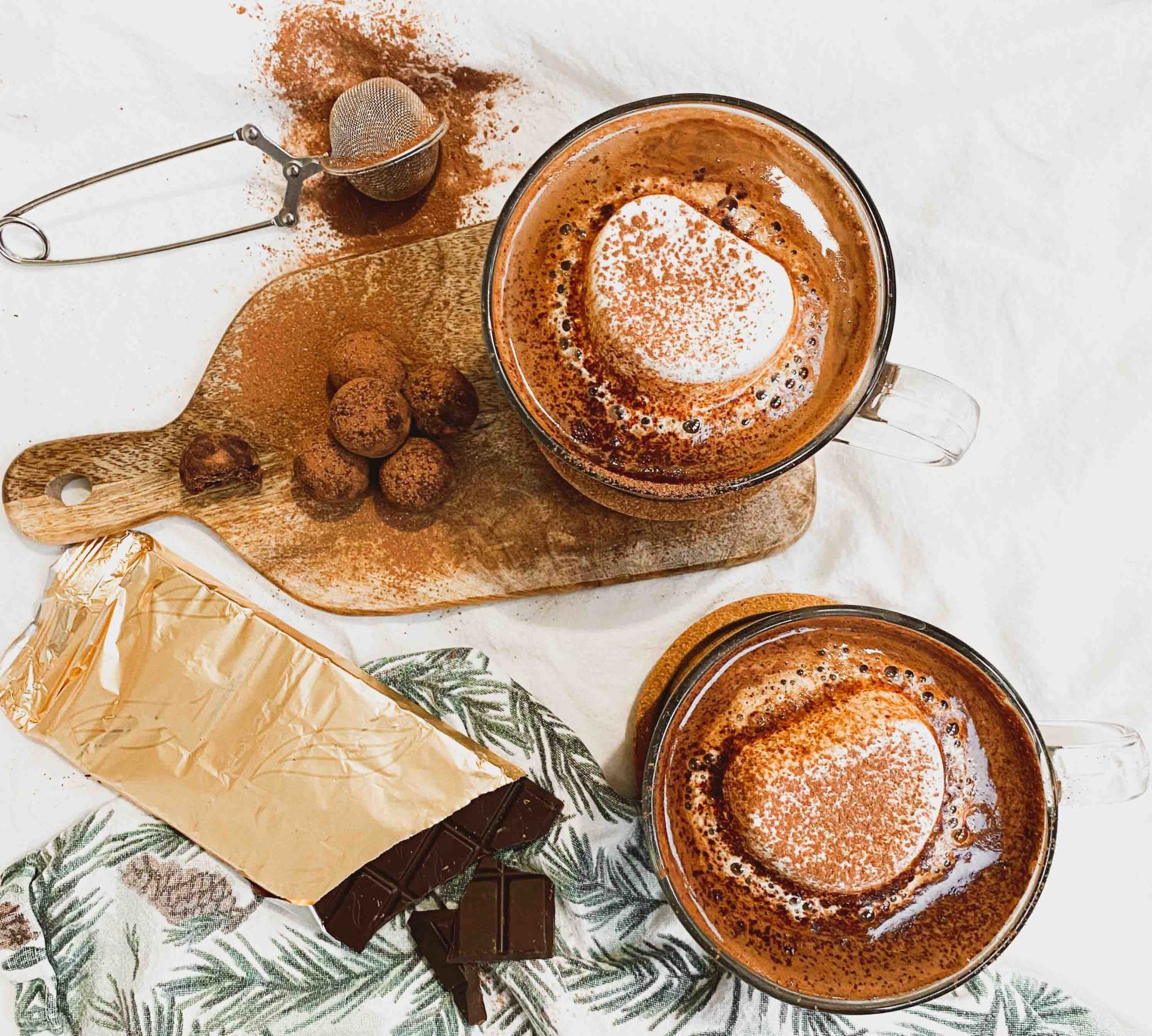Chocolate is good, chocolate is great! Having great quality chocolate is a luxury experience. But there are much more to the making of good chocolate than you might know.
Chocolate makes us feel good; it makes us happy and it is very easy to find. We love chocolate in no matter what forms. Just like the art of a good wine, coffee, whiskey and many more, chocolate has its own delicacy in every step of the way from growing the cacao beans to wrapping it in foil. A great quality bar of chocolate can be as expensive as the finest bottle of Champagne. While the price is not the only thing that identifies the value of a good quality chocolate, here is what you might want to know about the production of a so call “good chocolate”.
Just in case you haven’t known it yet, but chocolate is the basic mixture of cocoa powder (roasted and ground cacao seeds), sugar and fat with the cocoa being the important ingredient which is what gives chocolate such high value and unique taste. Before chocolate became a popular treat nowadays, cacao beans were used in rituals and traded as currency by the Aztec. However, cacao tree was discovered by the ancient Maya of Mesoamerica before they were conquered by the Aztec. Later on cacao was widely use as medicine in Europe and was mixed with honey or sugar for easier consumption. From then cacao became more popular and is industrialized into chocolate nowadays.
So from now you can kind of guess what makes up good chocolate. The amount of cocoa solids is one of the things that defines a good chocolate. The acceptable amount of cocoa in milk chocolate is a minimum 30% and 45% for dark chocolate. A truly great chocolate will have around 70% of cocoa. While the amount of cocoa represents in chocolate is one factor, the region of the cocoa beans and the way it is prepared are other important factors.
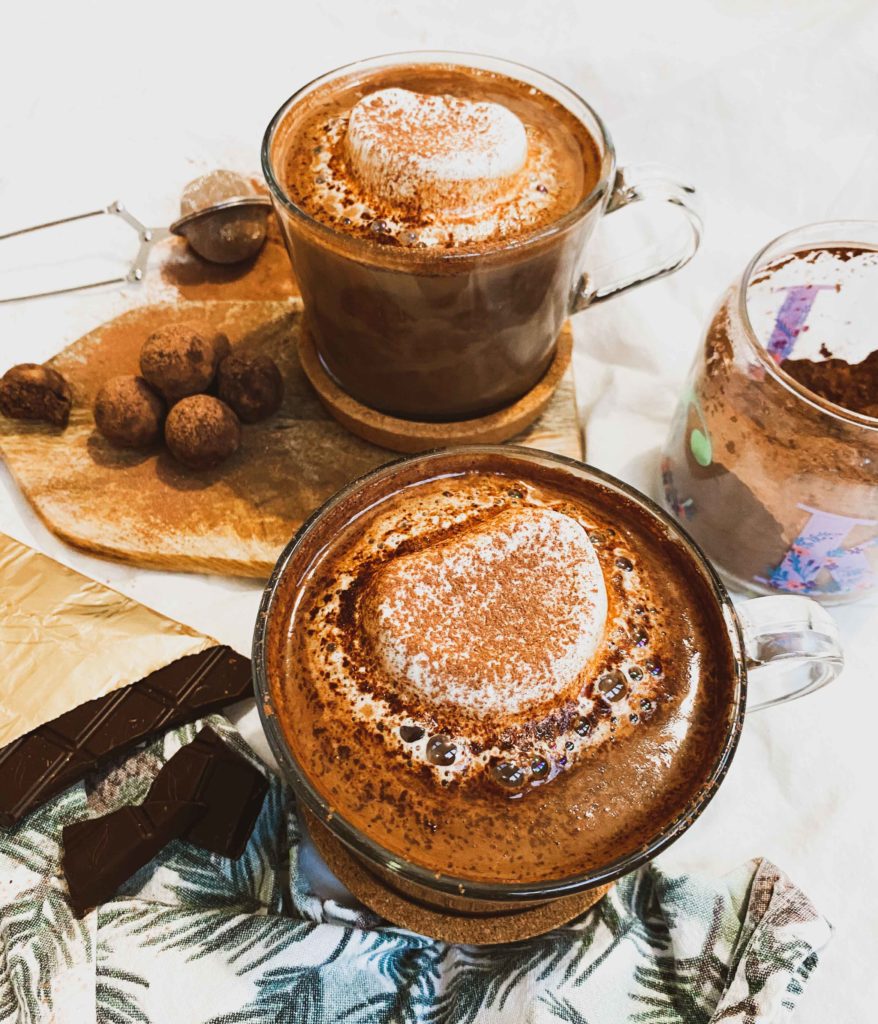
You might have heard that the good quality chocolate will snap when you break it. Well, that is one way to test it. But the better way to know if the chocolate is good (may be the best way) is to taste it! But before you go ahead and eat a bunch of chocolate to test the quality, here is what you need to do. Basically, put a small piece of chocolate in your mouth and let it sit, don’t chew or swirl it around, then see how fast it started to melt. If the chocolate is in a good quality, it will melt and turn silky fast. If it is bad, it will be chunky and chewy due to low cocoa butter content.
Experiencing a good chocolate is like tasting a fine champagne or a great cup of coffee, it is a unique experience. You can eat a chocolate bar from a convenient store and be done with it, but the experience you have from eating high quality chocolate can not be replace by any sugary low-quality chocolate bar. So here is what you need to know before going ahead and search for the top-notch chocolate.
The Cacao Beans
As worshiped by the Aztec, cacao is the most important key to a good chocolate. While two of the world’s finest varieties of cacao beans are in the northern South America, the processing of cacao beans is as important as the varieties of the beans.
Cacao bean comes from the pod of cacao tree that only grows under the tropical climates. Not only the heat is needed for the cacao tree to flourish but also the humidity must be maintained. The cacao seeds are then separated from the ripe pod and then sun dried until the seeds turn brown. In some cases the seeds are dried using a machine but mostly sun dried method is preferred to lower the cost. The seeds are then sent to the manufacturing centre to be roasted and ground.
Although the process of producing cocoa powder might not seem that complicated, it is still one of the most non-ethical industries among all. The lower price of chocolate and easy access have successfully increased the consumption of chocolate and we are all happy, right? Well, we know that it all comes with cost. Problems from mass production of chocolate are namely slavery, poverty, deforestation and the use f harmful chemicals. Cacao farmers are underpaid, the children are being put to work to produce the on demand cocoa and using deforestation to expand cocoa farming area.
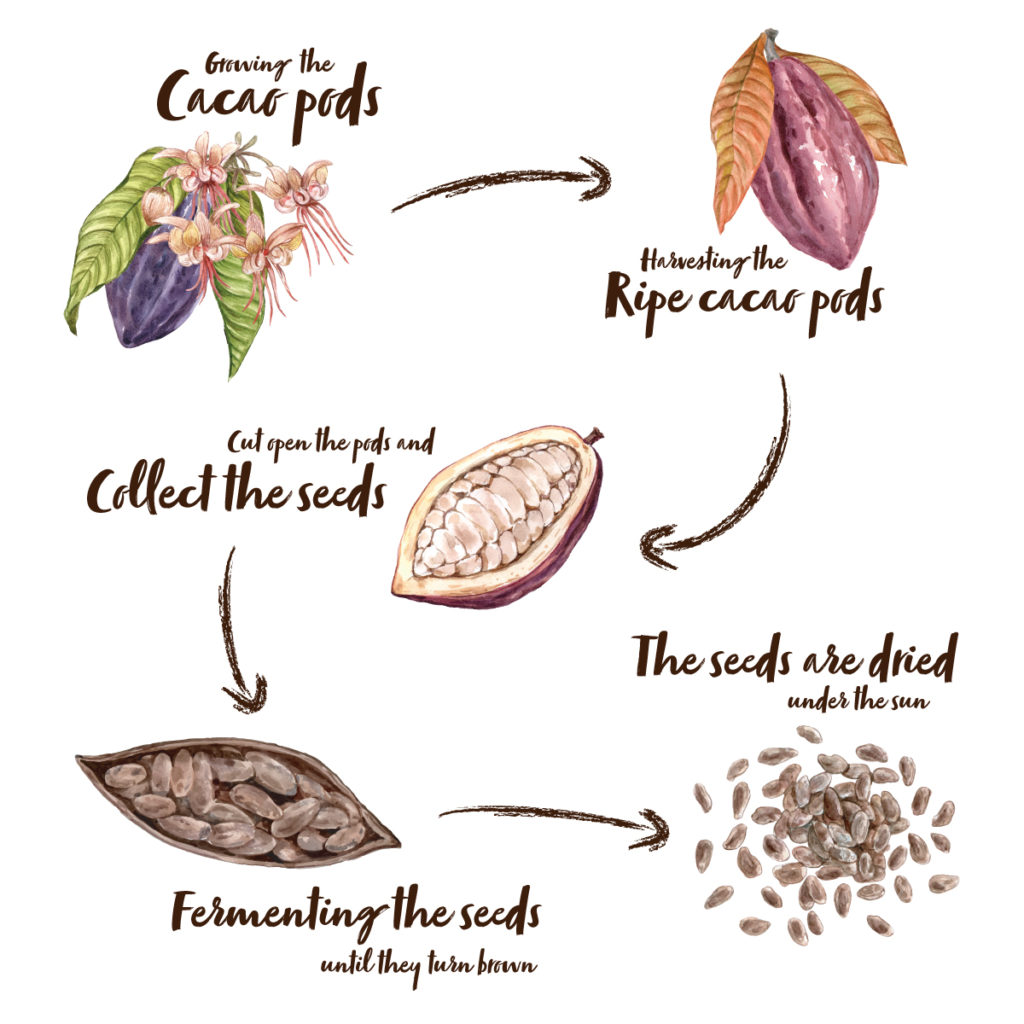
These problems are not new to the production of chocolate. In fact, many companies and organizations are working together on solving these issues. But instead of driving the economy to the cocoa farming countries with the increase chocolate consumptions, the situation seems rather stagnant. The organizations with the goal to maintain ethical production of cacao beans can only do just one layer. Still there are many parts that needs to work as a whole to actually make the situation better and that includes us as consumers.
We as consumers can help as on one extent by carefully choosing to buy chocolate that are ethically produced. Even if the price are slightly higher, but it is all for the good cause. Here are some of the labels/organisations to look for on the chocolate package.
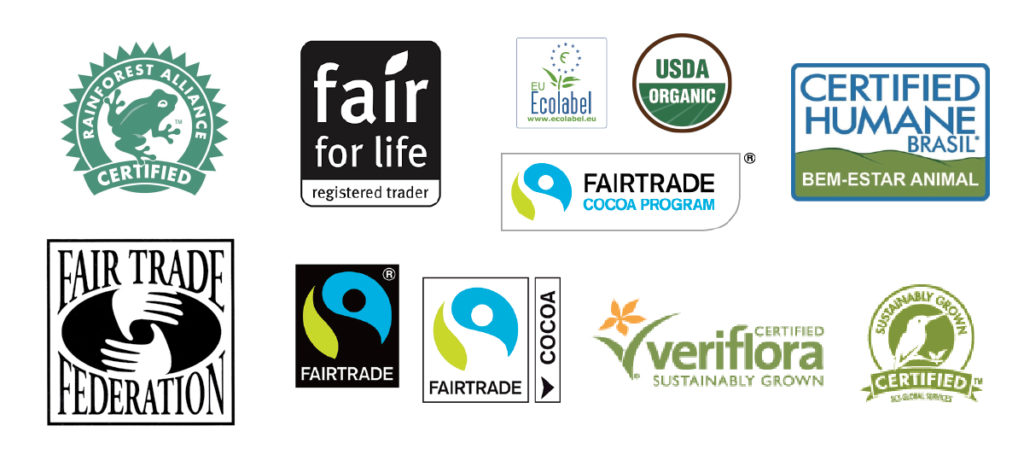
Becoming Chocolate
Now that the cacao beans are ready to be roasted and ground by the chocolate manufacturers, it is time for each company to put up their secret recipes. What makes the chocolate taste different in each company are the amount of cocoa butter, cocoa powder, sugar and milk presented in the chocolate. There are many steps for the chocolate to get to where we see it in the package today. However, the sourcing of cacao beans is still pretty much similar in most companies.
A premium chocolate produced by the mainstream companies means that they have put higher amount of cocoa liquor in the mixture. Yet, the chocolate we found in the store todays are mostly low in cocoa liquor, high in sugar and vegetables fat. This is how the companies keep their chocolate low in price and meets the demand, since sugar alone is quite enough to get people addicted.
The chocolate manufacturer has been putting pressure on the chocolate farming industry, but they are not the only one to blame. There are some companies and new start-up that concern about the sore of cacao production and have developed programs to relief the situation. One of the reasons why some companies find struggles sourcing ethical cacao is the fact that the cost is higher, therefore, the chocolate will need to be sold for a higher price. It might not sound that bad for us to trade some more money for the ethical cacao, but for the companies that have been selling their chocolate at the same price for few decades, the change will definitely takes some more time to adjust.
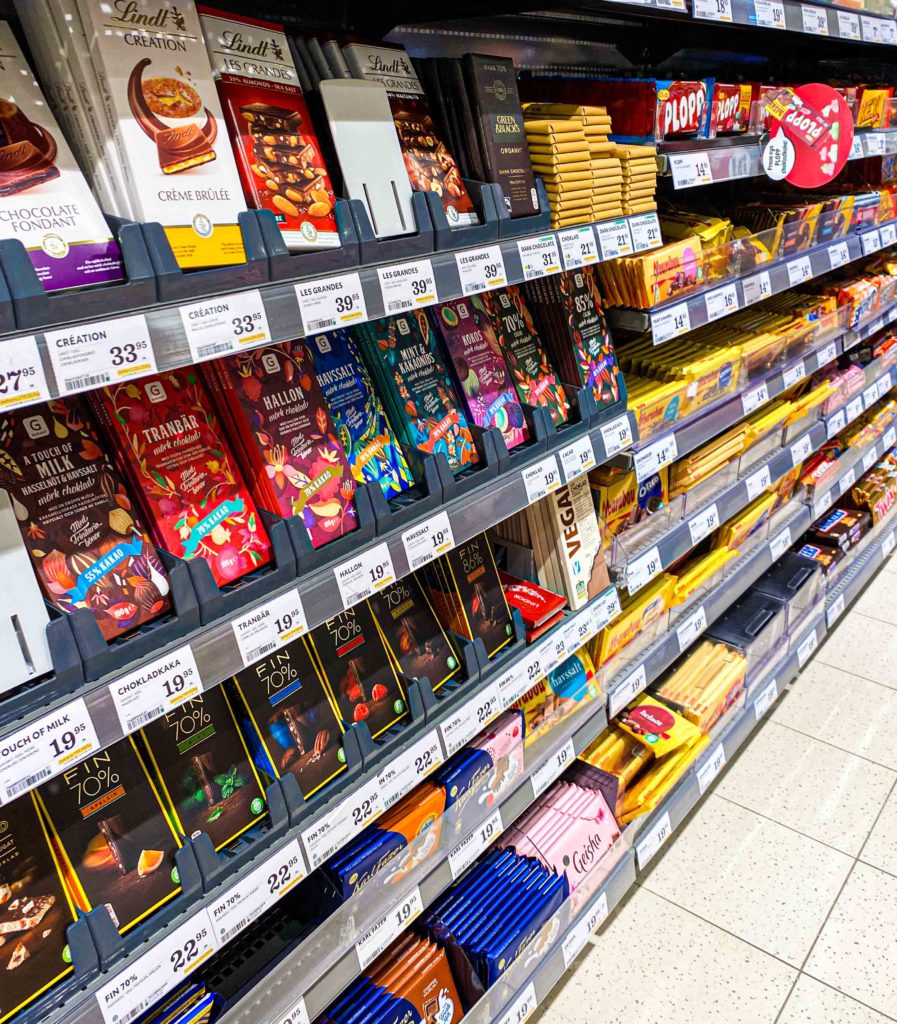
The Big Picture
So does it means if you want good chocolate you should look for the one with a higher price or even… source the cacao yourselves? Well, one part is right, the good chocolate does have a higher price than those without ethical labels. By eating ethical chocolate, you are not only making your tummy happy but also the community that relies on cacao production for living.
Now that you know the secret to a good chocolate is the cacao. It should not be only about the taste or the amount of cacao concentration. Perhaps, the term of good chocolate we should consider these days is how much impact that chocolate bar has on the people and the planet.
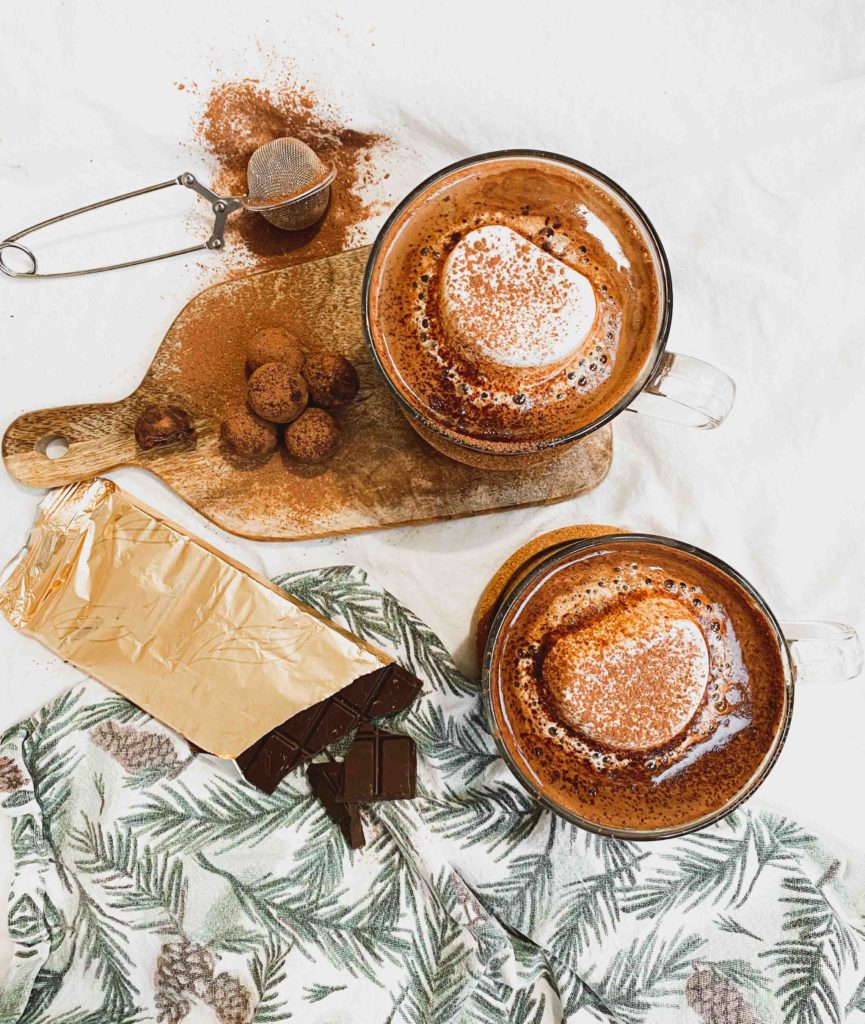
Read more on:
- De Almeida, A.A. and Valle, R.R., 2010. Cacao: ecophysiology of growth and production. Ecophysiology of Tropical Tree Crops. FUOV Fabio Damatta Dept. Of Plant Biology, Vicosa, Brazil, pp.37-70.
- Griffith, G.W., 2004. Witches’ brooms and frosty pods: threats to world cacao production. Biologist, 51(2), pp.71-75.
- Blare, T. and Useche, P., 2013. Competing objectives of smallholder producers in developing countries: examining cacao production in Northern Ecuador. Environmental economics, (4, Iss. 1), pp.72-80.
